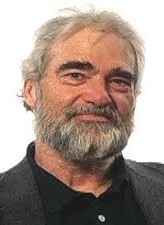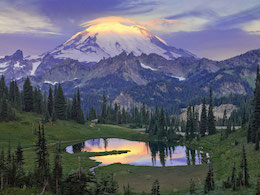We are living in a time of unprecedented and rapid technological, economic, social, and environmental change. I will argue that, in spite of what seems to be ever greater technological complexity, the largest scale natural “operations” of Earth are actually undergoing an unnoticed simplification, one that is already affecting geological landscapes, biodiversity, global economy, and human population. I will make predictions about specific “simplifications” that will accrue from sea-level rise, climate instability, diminishing petroleum output, increasing population, and dwindling global food supply. Whether these simplifications happen fast enough to allay an actual mass extinction (of our species) rather than “just” the current and expanding “mass depletion” over the next century, remains to be observed.
 Dr. Peter Ward is a paleontologist and astrobiologist at the University of Washington and a world-renowned authority on mass extinctions, climate change, evolution, and astrobiology. His research examines the history of life on Earth over billions of years, focusing in particular on mass extinction events. That work gives him unique ‘deep time’ perspectives on the future of life on this planet, as well as the possibility of life elsewhere in the universe. Dr. Ward has appeared on NOVA and Ted Talks and written over a dozen popular science books including “Rivers in Time: the Search for Clues to Earth’s Mass Extinctions” and “The Flooded Earth: Our Future In a World Without Ice Caps”.
Dr. Peter Ward is a paleontologist and astrobiologist at the University of Washington and a world-renowned authority on mass extinctions, climate change, evolution, and astrobiology. His research examines the history of life on Earth over billions of years, focusing in particular on mass extinction events. That work gives him unique ‘deep time’ perspectives on the future of life on this planet, as well as the possibility of life elsewhere in the universe. Dr. Ward has appeared on NOVA and Ted Talks and written over a dozen popular science books including “Rivers in Time: the Search for Clues to Earth’s Mass Extinctions” and “The Flooded Earth: Our Future In a World Without Ice Caps”.



 Professor Emeritus Pat Pringle of Centralia College and colleagues led a 3-day trip to the Mount Rainer area to see the geology of this fantastic mountain and its geologic and environmental effects on the surrounding region. Participants provided their own transportation and lodging (in Ashford and Packwood); we provided field trip log, a published guidebooks, experts on specific aspects of the geology and geomorphology, and a chance to see one of Washington’s three active volcanoes.
Professor Emeritus Pat Pringle of Centralia College and colleagues led a 3-day trip to the Mount Rainer area to see the geology of this fantastic mountain and its geologic and environmental effects on the surrounding region. Participants provided their own transportation and lodging (in Ashford and Packwood); we provided field trip log, a published guidebooks, experts on specific aspects of the geology and geomorphology, and a chance to see one of Washington’s three active volcanoes.
